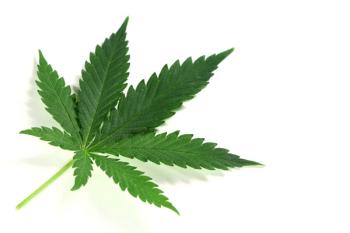
New Study: Cannabis Not Independently Linked to Head and Neck Cancers
Key Takeaways
- Cannabis use alone does not increase head and neck cancer risk; alcohol and tobacco are significant factors.
- Logistic regression analysis showed cannabis-related cancer risk becomes insignificant after adjusting for alcohol and smoking.
Study finds no independent link between cannabis use and head & neck cancer. Alcohol and tobacco may be key risk factors.
A recent study published in the Journal of Oral Pathology & Medicine, investigated whether there was an increased risk of head and neck cancers through cannabis use (1).
Data showed that cannabis use is not
In order to investigate the potential risk, the study’s authors utilized ICD 10 codes and an i2b2 platform to access a large hospital database where they then selected patients that were cannabis users and were diagnosed with head and neck cancers (2). “Binary Logistic regression of factors such as demographics, smoking, alcohol consumption, and HPV vaccine history was used. The odds ratio for oropharyngeal cancer among cannabis users was 3.12. After logistic regressions, it remained significant after adjusting for gender, age, and race but became insignificant after adjusting for alcohol, cigarette smoking, and HPV vaccine (1.07, 0.87, 1.02), respectively. The odds ratio for oral cancer among cannabis users was 2.38 before adjustments. It remained significant after adjustment for gender, age, race, and HPV vaccine but became insignificant after adjustment for alcohol and cigarette smoking (0.7, 0.62),” the study mentioned (2). “After adjusting for cannabis use, the odds ratio for oropharyngeal cancer in the alcohol users was 7.95 and 7.39 for smokers. The odds ratio for oral cancer after adjusting for cannabis in the alcohol users was 9.67 and 7.52 in the cigarette smokers. HPV vaccination had an inhibitory effect on both cancers.”
“The odds ratio for oral cancer among cannabis users … became insignificant after adjustment for alcohol and cigarette smoking (OR=0.7 | OR=0.62). … Furthermore, after adjusting for cannabis use, the OR [odds ratios] for OPC [oropharyngeal cancer] in the alcohol users was 7.95 and 7.39 for smokers,” Investigators reported (1). “The OR for OC [oral cancer] after adjusting for cannabis in the alcohol users was 9.67 and 7.52 in the cigarette smokers.”
The study’s authors concluded (1,2), “
Can Cannabis Compounds Help With The Fight Against Cancer?
Highlighted results of the test included:
- The highest cytotoxic activity was seen in semi-pure fractions containing dadahol A and/or dadahol B compared to control in all four lines
- The compounds were shown to have varying effects against cancer cells
- Pure dadahol A showed the lowest inhibitory concentration in all the cell lines
“Though industrial hemp is more well-known for its cannabinoid content, it contains hundreds of other phytochemicals that may have uses in the functional food and pharmaceutical industry,” explained the researchers (3). “Furthermore, utilizing each part of the hemp plant, including the roots, will reduce agricultural waste and provide additional value to growers.”
References
- Norml. Cannabis not independently associated with increased risk of head, neck cancers
https://norml.org/news/2025/09/25/study-cannabis-use-not-independently-associated-with-increased-risk-of-head-and-neck-cancers/ (accessed Oct 1, 2025). - Katz J, Gao H, Spritzer S, Garcia IA. Use of Cannabis and Odds Ratio for Oropharyngeal and Oral Cancer-A Cohort Study. J Oral Pathol Med. Published online September 11, 2025.
doi:10.1111/jop.70055 - McEvoy, E. Cytotoxic effects on cancer cells shown by compounds in industrial hemp roots
https://www.cannabissciencetech.com/view/cytotoxic-effects-on-cancer-cells-shown-by-compounds-in-industrial-hemp-roots (accessed Oct 1, 2025).
Newsletter
Unlock the latest breakthroughs in cannabis science—subscribe now to get expert insights, research, and industry updates delivered to your inbox.





